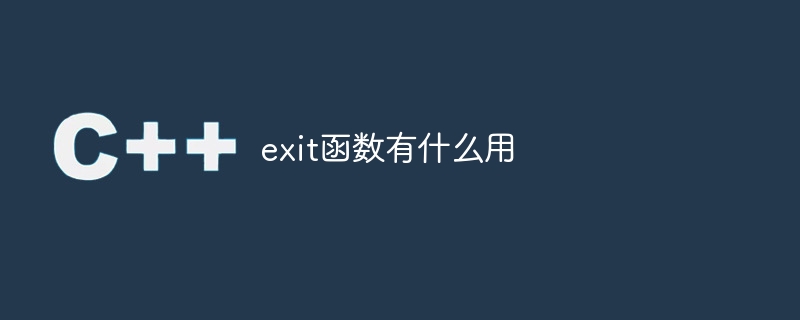Home >Backend Development >C++ >What is the use of exit function?
What is the use of exit function?
- PHPzOriginal
- 2024-02-21 11:27:041202browse

The exit function is a commonly used function in programming languages. Its function is to terminate the execution of the program. After calling the exit function in the program, the program will exit immediately and return to the operating system. The exit function can be called anywhere, not just at the end of the program.
The exit function has the following main uses:
- Terminate program execution: When the program reaches the expected results or an error occurs, the exit function can be called to terminate the execution of the program. For example, in a loop, if a certain condition is not met, you can use the exit function to exit the loop and terminate the execution of the program.
- Release resources: Some system resources are used or some files are opened in the program. These resources need to be released before the program terminates. Resources can be released when the exit function is called. This ensures that resources are released correctly and avoids resource leaks.
- Return program execution status code: When the program terminates, you can indicate the execution status of the program by calling the exit function and passing an integer parameter. Usually, returning 0 means the program exited normally, and returning other non-zero values means the program exited abnormally. In this way, when the program is called externally, the result of program execution can be judged based on the returned status code.
The following is a specific code example:
#include <cstdlib>
int main() {
int result = 0;
// 模拟程序执行过程
for(int i = 0; i < 10; i++) {
if(i == 5) {
result = -1; // 模拟程序发生错误
break;
}
// 执行一些操作
}
// 释放资源
// ...
// 调用exit函数终止程序执行,并返回状态码
exit(result);
return 0; // 这里的return语句实际上不会执行
}In the above example, the program simulates the execution process through a loop. When the loop variable i equals 5, an error occurs in the simulation program, result is set to -1, and the exit function is called to terminate program execution. After calling the exit function, the program will not execute the subsequent code and return directly to the operating system.
It should be noted that different programming languages may have different implementation and usage of the exit function. The above examples are usage examples in C language. In other programming languages, the corresponding exit function can be called according to specific syntax and specifications.
The above is the detailed content of What is the use of exit function?. For more information, please follow other related articles on the PHP Chinese website!

